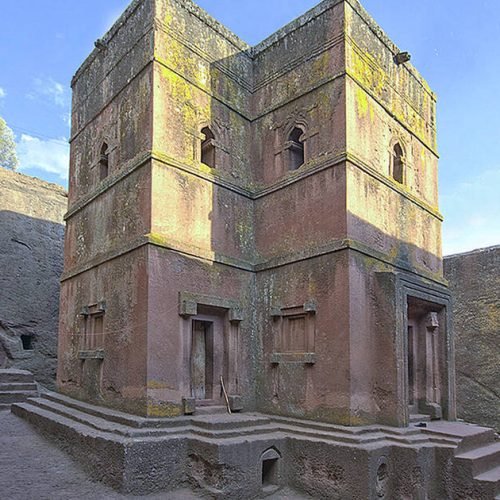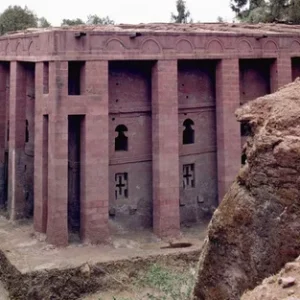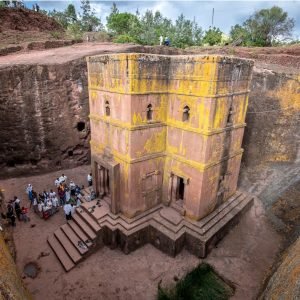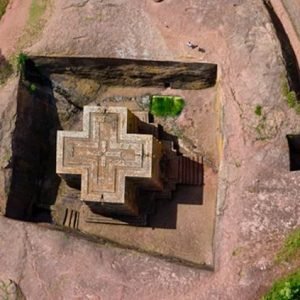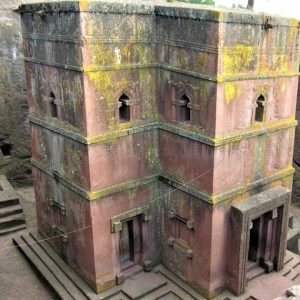The rock-hewn churches of Lalibela are a group of monolithic churches located in Lalibela, Ethiopia. This group of churches is a UNESCO World Heritage Site, known for its unique architecture and religious significance.
Lalibela is a holy city for the Ethiopian Orthodox Church, and the rock-hewn churches are considered a sacred site. These churches were built in the 12th century by King Lalibela, who is said to have been inspired by a divine vision to create a new Jerusalem in Ethiopia.
Lalibela's rock-hewn churches are made of solid volcanic rock. Craftsmen have carved the rock to create intricate structures with columns, vaults and sculptures. Some churches are even linked by tunnels and underground passages.
Each church has its own architecture and floor plan, but they all share common elements, such as ornate facades, carved pillars and religious frescoes inside.
Lalibela's most famous churches include the cross-shaped Church of St. George (Bete Giyorgis) and the Church of St. Mary (Bete Mariam), with its magnificent murals.
The construction of these churches is considered a remarkable architectural feat, given the limited tools available at the time. Their preservation over the centuries testifies to the deep religious devotion of the local community and their attachment to their cultural and religious heritage.
Visiting the rock-hewn churches of Lalibela offers visitors a unique experience. Visitors can explore these churches, admire their fascinating architecture and take part in the religious ceremonies that take place in these sacred places. It is recommended to visit the churches with a local guide to learn more about their history and spiritual significance.
In conclusion, the rock-hewn churches of Lalibela in Ethiopia are an extraordinary testimony to African architecture and spirituality. Their ingenious construction and religious significance make them a must-see destination for lovers of history and cultural heritage.

